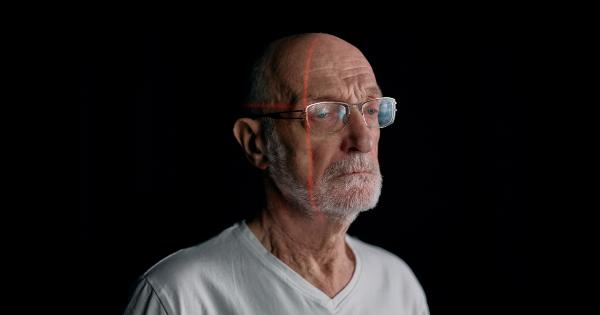Laser waxing is a popular method of hair removal that offers long-lasting results and smooth skin. It involves using laser technology to remove unwanted hair from the body.
While laser waxing can be an effective solution for many individuals, it is essential to consider certain factors before starting your laser waxing journey. In this article, we will discuss when you can start laser waxing and what precautions you should take.
1. Skin Tone and Hair Color
Before beginning laser waxing, it’s crucial to understand that not all skin tones and hair colors are suitable for this method of hair removal. Laser waxing works best on individuals with light skin tones and dark hair.
The laser targets the pigment in the hair follicles, so if you have blonde, gray, or red hair, laser waxing may not be as effective for you. Additionally, individuals with a darker skin tone may be at a higher risk of skin discoloration or burns from the laser.
It is recommended to consult with a professional to determine whether laser waxing is the right hair removal method for you based on your skin tone and hair color.
2. Age
Age can also play a role in determining when you can start laser waxing. While laser waxing is generally safe for adults, it may not be suitable for teenagers in certain cases.
Adolescents undergoing hormonal changes may experience increased hair growth, and it may be more effective to wait until their hormone levels stabilize before starting laser waxing. It’s important to consult with a dermatologist or an experienced laser technician to determine the appropriate age to begin laser waxing treatments.
3. Medications and Medical Conditions
Some medications and medical conditions can affect the safety and effectiveness of laser waxing. If you are currently taking any medications or have any underlying medical conditions, it is crucial to inform your laser technician beforehand.
Certain medications, such as antibiotics and retinoids, can make your skin more sensitive to the laser or increase the risk of complications. Similarly, medical conditions like polycystic ovary syndrome (PCOS) or hormonal imbalances can affect the results of laser waxing. Always disclose your medical history and any medications you are taking to ensure a safe and effective treatment.
4. Sun Exposure and Tanning
Prolonged sun exposure and recent tanning can make your skin more sensitive to the laser and increase the risk of complications. It is recommended to avoid direct sun exposure and tanning beds for at least two weeks before your laser waxing session.
If you have a tan, it is best to wait until it fades before starting laser waxing to reduce the risk of burns, discoloration, or other adverse effects.
5. Recent Hair Removal Methods
If you have recently used other hair removal methods such as waxing, plucking, or threading, it is advisable to allow a certain amount of hair growth before starting laser waxing.
Laser waxing targets the hair follicles, so there needs to be enough hair growth for the laser to effectively target and destroy the hair follicles. Typically, it is recommended to have at least 2-3 weeks of hair growth before undergoing laser waxing.
6. Pregnancy and Breastfeeding
If you are pregnant or breastfeeding, it is generally advised to postpone laser waxing until after you have given birth or finished breastfeeding.
While there is limited research on the effects of laser waxing during pregnancy or breastfeeding, it is recommended to err on the side of caution. Hormonal changes during pregnancy can affect hair growth, and laser waxing may not be as effective during this time. It’s best to consult with your healthcare provider before undergoing laser waxing while pregnant or breastfeeding.
7. Allergies and Sensitivities
Individuals with allergies or sensitivities may need to take extra precautions before starting laser waxing. Laser waxing involves exposing the skin to laser energy, which can cause temporary redness, swelling, or itching.
If you have a history of allergic reactions or sensitivities, it is crucial to inform your laser technician beforehand. They can perform a patch test to determine if you have any adverse reactions to the laser or the products used during the treatment.
8. Pre and Post-Treatment Care
Proper pre and post-treatment care is essential for maximizing the results of laser waxing and reducing the risk of complications.
Before your laser waxing session, it is generally advised to avoid using any skincare products that contain retinoids or exfoliating ingredients for a few days. These products can make your skin more sensitive to the laser. Additionally, it is important to keep the treated area clean and moisturized after the treatment and follow any specific instructions provided by your laser technician.
9. Number of Sessions
It’s essential to understand that laser waxing typically requires multiple sessions to achieve optimal results. The exact number of sessions can vary depending on factors such as hair thickness, hair growth cycle, and the area being treated.
Most individuals need anywhere from 6 to 8 sessions spaced several weeks apart to achieve the desired outcome. Therefore, when considering laser waxing, it’s important to commit to the recommended number of sessions and understand that results may not be immediate.
10. Professional Consultation
Before embarking on your laser waxing journey, it is highly recommended to consult with a qualified professional or an experienced laser technician. They can assess your skin type, hair color, and overall suitability for laser waxing.
They will also provide you with personalized advice, pre and post-treatment guidelines, and answer any questions or concerns you may have.
Conclusion
Laser waxing can be an effective and convenient hair removal method, but it’s essential to consider several factors before starting the treatment.
Factors such as skin tone, hair color, age, medications, medical conditions, sun exposure, recent hair removal methods, pregnancy/breastfeeding, allergies/sensitivities, and pre/post-treatment care can all impact the timing and suitability of laser waxing. Always consult with a professional to determine whether laser waxing is the right choice for you and follow their guidelines for optimal results and safety.































